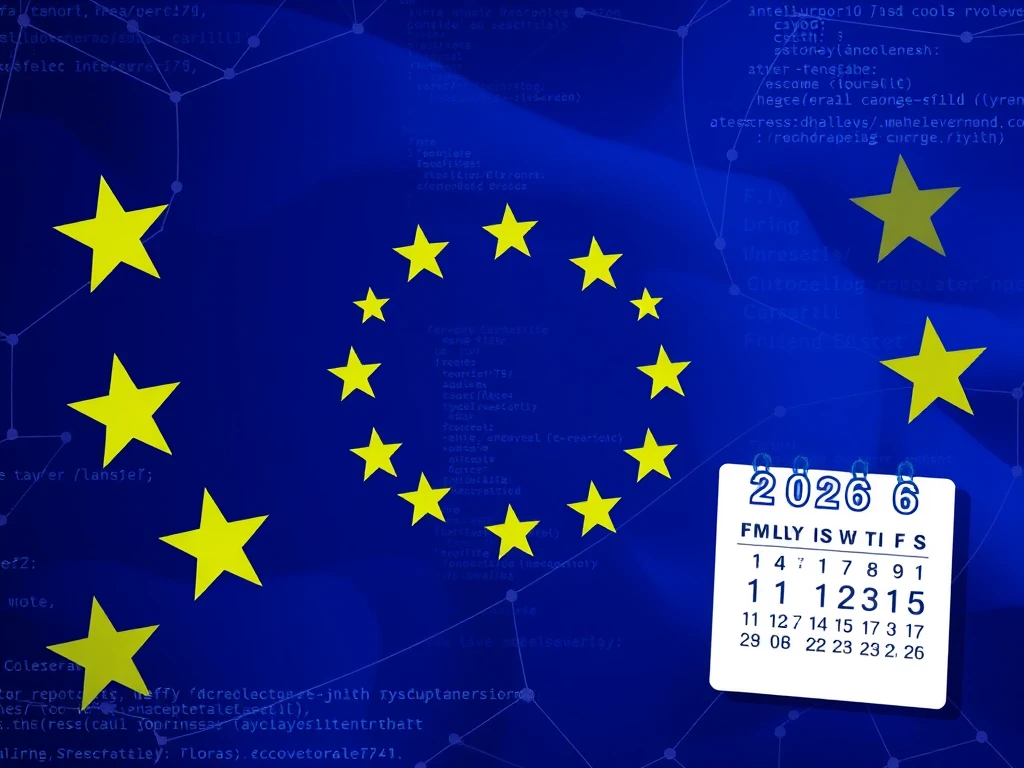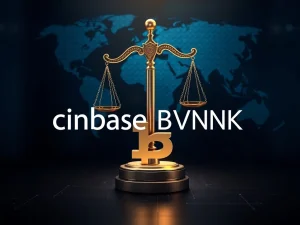Europe DeFi Regulation: Crucial Decisions Loom in 2026 as MiCA Leaves Sector Uncertain

The world of Decentralized Finance (DeFi) in Europe is facing a pivotal moment. While the landmark Markets in Crypto-Assets Regulation (MiCA) is now in effect, it leaves many questions unanswered for the rapidly evolving DeFi sector. The focus is now firmly shifting towards 2026, when European authorities plan to seriously address DeFi regulation. But how do you regulate something designed to be decentralized?
DeFi Regulation 2026: The Definition Challenge Begins
European lawmakers are setting their sights on 2026 as the key year to interpret and define what ‘decentralization’ legally means within the context of financial services. This is a critical first step before effective DeFi regulation can be implemented. According to Vyara Savova, a senior policy lead at the European Crypto Initiative (EUCI), the lack of a clear definition is currently leaving DeFi protocols in a state of regulatory uncertainty.
Here’s a quick look at the timeline and key challenges:
- **Dec 30, 2024:** MiCA goes into effect, aiming to protect investors and manage risks for centralized crypto services and stablecoins.
- **Mid-2026 onwards:** EU authorities plan to begin interpreting the legal definition of ‘decentralization’.
- **Major Hurdle:** Applying traditional regulatory concepts (like licensing, KYC) to inherently decentralized systems.
MiCA’s Impact and Its DeFi Blind Spot
MiCA is the first comprehensive framework for crypto assets globally. It provides clarity for many parts of the industry but was criticized during its drafting for not fully addressing decentralized protocols. While the regulation primarily targets centralized crypto-asset service providers, Recital 22 of the bill suggested that ‘fully decentralized’ services might fall outside its scope. However, without a legal definition of ‘fully decentralized,’ this creates ambiguity.
As Savova noted, “No one actually knows what EU policymakers mean by DeFi” in a regulatory sense under the current framework. This regulatory limbo creates uncertainty for developers, investors, and users operating within the European DeFi space.
Understanding the Complexities of Decentralized Finance
Decentralized Finance aims to recreate traditional financial services (lending, borrowing, trading) using blockchain technology, without central intermediaries. This structure presents unique challenges for regulators accustomed to dealing with identifiable entities like banks or exchanges.
Key characteristics of Decentralized Finance that pose regulatory questions:
- Lack of a single legal entity responsible for the protocol.
- Operation through automated smart contracts.
- Governance often distributed among token holders.
- Open and permissionless access globally.
Applying rules designed for centralized institutions, such as requiring a licensed entity to perform KYC checks on every user, becomes complex or impossible for many DeFi protocols as they exist today.
Broader EU Crypto Regulation Landscape
The focus on Decentralized Finance in 2026 is part of a larger effort in EU crypto regulation. While the immediate post-MiCA period involves implementation, policymakers are already looking ahead. There had been discussions about a potential ‘MiCA II’ framework to cover areas not fully addressed, but according to Marina Markezic, Executive Director and co-founder of EUCI, a full sequel is unlikely.
Instead, ongoing discussions, particularly concerning stablecoins, may lead to targeted legislative updates rather than a complete overhaul. Additionally, separate Anti-Money Laundering (AML) rules impacting crypto are still being rolled out, with provisions potentially restricting privacy coins and anonymous accounts scheduled for 2027. This layered approach shows the EU’s commitment to building a comprehensive, albeit complex, regulatory environment for digital assets.
What Europe DeFi Regulation Means for the Future
The upcoming efforts in 2026 to define and regulate Decentralized Finance will be crucial in shaping the future of this sector in Europe. Clarity, while potentially leading to restrictions, could also pave the way for greater institutional adoption and investor confidence by reducing legal uncertainty. The challenge for regulators will be to balance risk mitigation with fostering innovation in a technology built on decentralization.
The industry will be watching closely to see how policymakers interpret decentralization and whether future regulations can adapt to the unique nature of DeFi protocols, ensuring investor protection without stifling technological advancement.
Compelling Summary
Europe is moving towards formal DeFi regulation starting in 2026, a necessary step following MiCA’s implementation which left the sector in regulatory limbo. The central challenge is defining ‘decentralization’ itself to determine how existing or new rules can apply. While a MiCA II is not expected, targeted updates are possible as the EU continues to build its comprehensive EU crypto regulation framework, including upcoming AML rules. The outcome of these efforts in 2026 will significantly impact the future of Decentralized Finance within the European Union.







